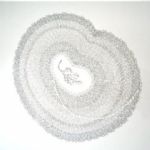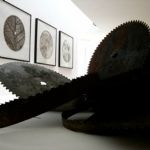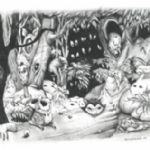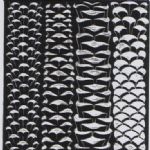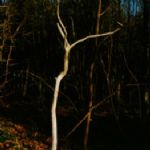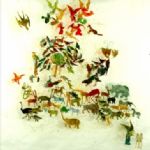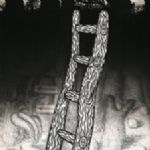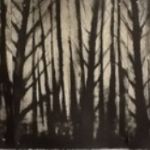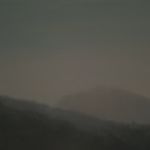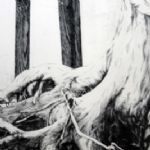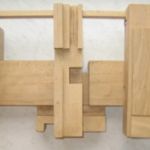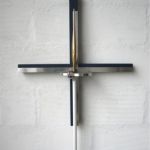TREES
an exhibition grown as organically as a tree
Patricia Swannell, Ian Steadman, Chris Roantree, Peter Randall-Page, Justin Partyka,
Lucy Mellor, Robin Mason, Jason Hicklin, Hugh Gillan, Delores De Sade, John Cobb, Tony Carter
This exhibition has grown as organically as a tree: from the seed in a random conversation, through a sudden sprouting of enthusiasm, to a major new branching with the involvement of artist and co-curator Jason Hicklin. In fact it has already grown into a wood with a wide variety of species; and this selection of work, which could be the first of many, confirms what the most cursory survey of the literature about trees has revealed: the subject is enormous!
The exhibition includes paintings and drawings, etchings and linocuts, sculpture and installations, each expressing the artists’ attitudes to trees, not fabricated for the exhibition, but what they were engaged with anyway.
At a time when there is anxiety about the future of trees, many suffering from devastating new diseases, and about the effect of climate change on the whole planet, there is, somewhat belatedly, a general re-awakening to the importance of trees, our dependence on them and now, to a degree, their dependence on us to right some of the wrongs we have done to them over the last two or three hundred years, having lived with them perfectly harmoniously and productively for millennia.
In many cultures the tree has been a symbol of life itself, its changes through the seasons a poignant metaphor. To us as babies even it is not simply the beauty of trees that impinges on our consciousness, it is their lively movement and the light that filters through them.
Our relationship with woods, forests and jungles, is darker and more ambiguous. We might succumb to the terrors of the dark, of the unseen and the unknown, but once we face those terrors and brave them we ultimately emerge with new strength into the light.
Patricia Swannell: Aquatints, mostly unique, focusing on the delicacy and vulnerability of fronds from different trees; drawings where tree-rings are formed of words related to the tree which inspired them; installation of crosscuts of different wood, coin-shaped, the cracks infilled with gold to represent A Medium of Exchange, A Store of Value; another installation, (Just) So Many Words, of the words of the Kyoto Protocol painted on the petals of fir cones, “questioning what is put at risk by the failure to meet obligations under that Treaty.”
Ian Steadman: Emotive sculpture made of saw blades by the artist/director/master printer at Arcane Studios. Images of trees etched into the circular toothed blades have also been printed on paper as separate images.
Chris Roantree: dark imaginings in etchings of what goes on in the Mayan jungle border lands of Guatemala and Belize, a place called Xilialmom.
Peter Randall-Page’s work has always been informed by natural phenomena and the study of botanical form in particular. His small prints were made while artist in residence at various botanical gardens in Australia. His large nine part print 'Root and Branch' is a more playful exploration of branching patterns.
Justin Partyka, Norfolk based landscape photographer, quotes Robert Adams: “Trees smell good, feel good, sound good and look good. And if that weren’t enough, they point beyond themselves.” Partyka has pointed his particular eye and his camera at trees and woodlands across East Anglia. On 7 September he and Canadian cowboy poet Ken Mitchell will be giving an image and word performance in the gallery, followed by supper (£25). Places are limited and must be booked in advance.
Lucy Mellor: The focus of the painting The Garden of Eden is the Tree of Knowledge of Good and Evil around which the story of the fall revolves amongst chaotic clusters of birds, animals and angels all living in harmony.
Robin Mason has made many journeys to the forests of the Vosges and the Black Forest, the backdrop for the “The Deepest Darkness” etchings. Trees occur throughout the works: as ladder, book lecterns, sign posts. Scattered across the surface of these trees, or on the extremities, are signs, numbers, mouths and eyes. Through the use of attributes borrowed from the medieval mystical works of Matthias Grünewald, Mason is entangling with the position of the artist as wanderer, exploring and gathering from museums and galleries elements that merge with the fear and excitement still held in the darkness of the green canopies.
Jason Hicklin: Normally focused on the coast of Great Britain, the rare earlier etchings of woodland have the artist peering tentatively into the enveloping darkness. During a recent walk along the Solway Firth in Dumfries and Galloway the woods offered shelter from the prolonged rain and created something of a
barrier through which the Solway Firth could be glimpsed.
Hugh Gillan: Paintings and drawings of liminal spaces where trees meet man-made roads and cables. Often they are familiar spaces or fleetingly observed from a train or through fog, “a weather condition that reflects the transience of the ever-changing environment.”
Dolores de Sade's work looks at ideas of place and typography as placeholders for emotional states of being. As we pass through the landscape there is a simultaneous desire to remain absent and yet central, knowing that there is no place that has not now already been explored, but that we are held with the paradigm of another generation’s idea of place.
John Cobb: Tree - A Forensic Approach is a structure made by a sculptor who always uses wood, from many tree species, for his work - in this case beech. He has deconstructed an idea (and a block of wood) and reassembled the pieces as a serious work of art - with his usual witty intent.
Tony Carter: The three dimensional metal cross, Epiphany, is a dramatic, symbolic abstraction from the familiar cruciforms of Christian iconography. It demonstrates the artist’s interest in the capacity of objects “to reflect aspects of our sensory and psychological condition.”
Exhibition dates
-
Open on Saturdays, 10 am - 5 pm
These images are a selection of the works available at the Gallery
Please contact the gallery for further information.

